Plagiarism Warning Signs: Indicators of a Student's Dishonest Acts
Ashley Merit
Content writer and editor for Netus.AI
Table of Contents
Plagiarism Warning Signs. The internet has brought about significant improvements in the way people access information for educational and professional purposes. However, the ease of acquiring information has also given rise to the problem of plagiarism, which is the act of using someone else’s work without giving proper credit. Plagiarism can take different forms, from copying an entire work to unintentionally reproducing another person’s ideas or expressions. The extensive availability of resources online has contributed to the proliferation of plagiarism, influencing learners and professionals alike.
Plagiarism is not only considered unethical, but it could also lead to legal consequences if a copyrighted work is infringed upon without permission. It is important for educators and institutions to recognize and address the signs of plagiarism, so that they can foster a culture of academic integrity and maintain a fair environment for learners. With the ability to discern common knowledge from unique intellectual property, people can share information effectively without resorting to unethical practices.
Key Takeaways
- Plagiarism is a significant issue exacerbated by unlimited access to digital information.
- Ignoring academic dishonesty can lead to potential copyright infringement consequences.
- Identifying warning signs and understanding common knowledge can help prevent plagiarism.
How Much Internet Is to Blame For Plagiarism in Academics?
The internet has indeed made it easier than ever for students and writers to engage in plagiarism and breach academic integrity. The prevalence of duplicate content, especially in online sources, remains a significant challenge. Different types of plagiarism include:
- Direct copying
- Missing citations
- Absence of quotation marks around quotes
All these instances can strip an original author of their deserved credit. Although many occurrences result from unintentional mistakes, the impact on reputation and credibility remains severe.
Utilizing a plagiarism checker is a crucial step towards addressing plagiarized content. These tools can detect similarities with earlier published work, allowing for corrections before submission. By being vigilant and ensuring that proper citations are given, plagiarism in academic writing can be mitigated, despite the ease provided by the internet.
Plagiarism Is Not Punishable, But Copyright Infringement Is Punishable
While plagiarism refers to the unethical use of someone else’s work or ideas without proper credit, it is not considered a legal offense. On the other hand, copyright infringement involves using copyrighted material without the owner’s permission, which is a punishable act. Therefore, consequences of plagiarism are usually limited to academic or professional sanctions. However, copyright infringement can lead to legal consequences, such as fines or penalties.
It is crucial to prevent plagiarism and respect intellectual property rights to avoid any complications following the submission or publication of your work.
Plagiarism Warning Signs Among Students
Detecting and addressing plagiarism is essential for maintaining academic integrity. By being aware of warning signs, educators can help students avoid the pitfalls of plagiarism and encourage original work. The following factors may contribute to plagiarism among students:
- Difficulty in Generating Unique Content:
Students who struggle with critical thinking may have trouble coming up with original ideas for their research papers or assignments. While it’s common for students to use resources to gather information, they should also develop their own perspectives and findings. Students who fail to create unique content may resort to copying material, which can be easily detected using plagiarism checkers like Turnitin.
- Poor GPA or Low Grades:
The pressure to achieve high grades can lead some students to plagiarize in an attempt to improve their academic standing. Fear of failure or not meeting expectations can cause students to resort to copying assignments from other sources. This approach, however, is never a true solution and can result in severe consequences.
- Lack of Interest or Understanding:
Enrolling in courses that don’t align with a student’s interests can impact their motivation and learning outcomes. When students don’t feel engaged with the subject matter, they may put less effort into their assignments and resort to plagiarism.
- Uncertainty with Citation Rules:
Proper citation is crucial for avoiding plagiarism. Students should follow their institution’s citation guidelines, as mistakes can result in unintentional plagiarism. Careful attention to detail can prevent errors in citation formatting, while using tools like Grammarly can assist in proper attribution.
- Procrastination and Time Management Issues:
Deadlines play a significant role in academic assignments, and students who don’t manage their time effectively may find themselves rushing to complete their work. In these situations, the temptation to plagiarize can be high. Establishing a consistent routine and breaking tasks into smaller steps can help students maintain progress and avoid last-minute stress.
By understanding these warning signs of plagiarism among students, educators can provide guidance and support to help students develop essential skills for effective research, writing, and proper attribution. Encouraging collaboration while emphasizing the importance of citing sources can promote original work and foster academic success.
Frequently Asked Questions
What signs can imply a student is plagiarizing?
- Difficulty in writing: Students who struggle with their writing may resort to plagiarism.
- Inconsistency in style and quality: Sudden changes in the writing style or quality within the same assignment might indicate borrowed content.
- Too similar to other works: If a student’s work is highly similar to other sources, it raises suspicion.
- Lack of citations or improper citations: Plagiarism can occur when students fail to credit sources correctly or neglect to include citations.
How can teachers detect possible plagiarism in assignments?
- Compare the submission to known sources: Online tools like Turnitin can help detect similarities between submitted work and a database of existing documents.
- Look for inconsistencies: Pay attention to vocabulary, style, and formatting inconsistencies that suggest a mix of original and copied content.
- Be familiar with the student’s writing style: Knowing a student’s writing abilities can help identify instances when the quality of work exceeds their expected level.
What are some red flags suggesting a paper may not be original?
- Sudden changes in writing style, language, or quality
- Lack of proper citations
- Unnatural or disjointed flow of ideas
- Copied or just slightly rephrased sentences or paragraphs
- Mismatch between the quality of the paper and the student’s known abilities
How can students unintentionally commit plagiarism?
- Unintentional plagiarism can occur when a student:
- Misunderstands proper citation methods
- Paraphrases too closely to the original source
- Fails to use quotation marks or credit sources properly
- To avoid unintentional plagiarism, students should:
- Learn and apply proper citation guidelines
- Develop good note-taking habits
- Understand the difference between paraphrasing and copying
What approaches are effective for detecting plagiarism in academic papers?
- Using plagiarism detection software: Tools like Turnitin and Scribbr can help screen assignments and flag any potential issues.
- Educators examining submissions closely: Teachers need to be vigilant and pay attention to details within assignments that may indicate copied content.
- Encouraging original thought: Providing students with unique and creative assignments can help them think critically and reduce the likelihood of plagiarism.
How may changes in writing style or quality imply potential plagiarism?
- A sudden, unexplained shift in writing style, grammar, or vocabulary may suggest the student has borrowed text from another source.
- A significant improvement in the quality of work compared to the student’s known abilities may indicate the use of an external source.
- Unusual variations in formatting or citation styles within the same assignment can be telltale signs of copied content.

The shortcomings of content generated by AI | NetusAI
Discover why fast, high-volume AI content often fails to deliver real results. Learn about the crucial missing feedback loop and how implementing performance tracking can transform your AI content strategy.
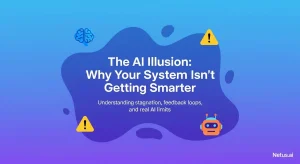
The illusion of AI: Your system's intelligence gap | NetusAI
Stop wasting marketing spend! Most AI tools don’t learn from results, causing content stagnation and low engagement. Discover why your generative AI isn’t getting smarter and what system actually learns and optimizes content.
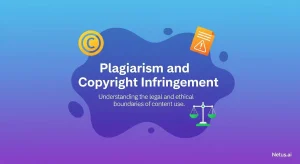
Plagiarism and copyright infringement | NetusAI
Learn the distinct differences between plagiarism and copyright infringement. Understand the ethical and legal implications and get practical strategies for avoiding both academic and creative work with NetusAI.
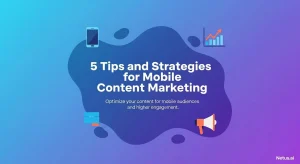
Tips and strategies for mobile content marketing | NetusAI
Optimized for mobile-first indexing, learn 5 essential strategies to capture attention, enhance engagement and drive leads and sales with your mobile content marketing.
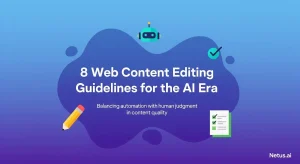
Web content editing guidelines for the AI era | NetusAI
Review web content editing guidelines for the AI era. Learn how to edit AI-generated content, ensure authenticity and optimize for SEO and readability.
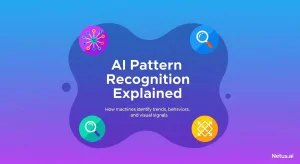
Explaining AI pattern recognition | NetusAI
AI pattern recognition enables machines to identify trends for diverse applications, from detecting plagiarism to fraud. Discover its processes, models and real-world benefits.
